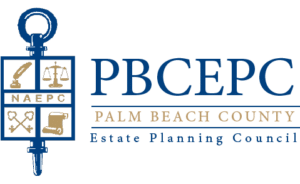
By Nathan Flah
Flah & Company

1. Fewer than 10% of all life insurance policies issued ever pay out a death claim.
When less than one in ten of the products a life insurance company manufactures are put to the test, the manufacturer can afford to play it somewhat fast and loose.
Lesson: Have a policy custom built to exacting standards and let the other 90% of insureds enhance the performance of your policy!
2. Even fewer policies are routinely monitored.
As policy dividend, interest and crediting rates continue their 30-year ebb (see attached chart), projected durations of in-force policies are reduced. When the policyowner recognizes their policy’s trajectory has gone off the rails, she/he asks their agent/carrier for help. Unfortunately, carriers may be incented to allow older policies to lapse; even seasoned, well-intentioned agents receive no training in policy “re-engineering”. Many; perhaps most policies written in the past 30 years are underperforming; assuming most insureds are disinclined to die early to match the reduced policy duration, what ‘s an insured to do?
Lesson: Routinely utilize a methodical Policy Review & Optimization® process, avoiding ugly surprises and further boosting performance.
3. Underwriting likely has a bigger influence on the price of your policy than the carrier’s dividend or interest rate, or its rating.
The price difference between “Standard” underwriting class and “Best” class can be >18%! Industry wide, fewer than 20% of applications are approved at better than “Standard”. This is why Flah & Company created our Underwriting Management Process®, and the reason over 78% of our policies are issued superior to “Standard” class.
Lesson: Thoughtful Underwriting Management Process (“UMP®”) can save significant premium dollars! A prudent Policy Review & Optimization® process will often include the successful improvement of the underwriting class years after the policy was issued!
4. Current policies generally CAN be re-engineered to be an attractive asset!
Since most policies were saddled with a +/-150% (yes; 150,000 bps!) up-front sales charge, it’s worth investigating restructuring the existing policy before lapsing or replacing it. This is the primary reason Flah & Company owns a Policy Review & Optimization® entity.
Lesson: Methodical Policy Review & Optimization® can get a policy back on track.
5. Most policies are carrier-designed to be mediocre investments.
Agents take hundreds of hours of continuing education courses, but none on actuarial sciences, mortality curves or the “deconstruction” of policies. Carriers teach agents to proffer polices with a middle-of-the-road combination of death benefit with some “forced savings” (i.e. cash value), creating a dual-purpose policy. What asset; what tool do you own – that is “best” at performing two separate and distinct tasks? In fact, what multi-purpose tool is best at ANY task?
Lesson: Target the policy design to be a top performer for the desired task; pure death benefit or tax-preferred cash accumulation. Generally, having two separate policies – each performing their assigned task at a high level – provides much better performance than one dual-purpose policy. Our Policy Engineering Team builds “single purpose” policies targeted to provide either:
-
- Term insurance until age 120 – where cost is a fraction of traditional dual-purpose or “whole life” policies. Our policies are designed to maximize the return (IRR) on premiums paid. In fact, we engineer term policies where at death, the carrier will pay-out the death benefit… and guarantees to also refund 100% of the cumulative premiums!
- Robust, very liquid cash accumulation contacts designed with smallest death benefit allowed by U.S. Treasury Department. These contracts enjoy enviable tax and creditor protection status and are often used by banks, contractors and ultra-high net worth families as a parking place for cash.
6. The market for “used” policies has risen like a phoenix! The market for selling unwanted or unneeded policy has matured to the point that competing institutional buyers acquire and manage large blind pools of purchased policies. This creates a competitive bidding marketplace that can enhance the value received for selling a policy.
Lesson: Before surrendering or letting a policy lapse, even term insurance, investigate the possibility of selling the policy for significant value.
In conclusion: Properly engineered and uderwritten insurance can be a transparent, user-friendly single-purpose asset with very attractive non-correlated IRRs. Like any asset, it must be thoughtfully and regularly managed.
Nathan Flah helps fiduciaries monitor and manage clients’ insurance policies, oversees the firm’s policy reviews and re-engineers existing insurance portfolios.
